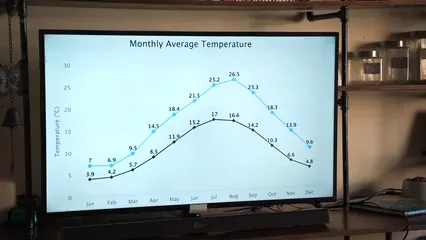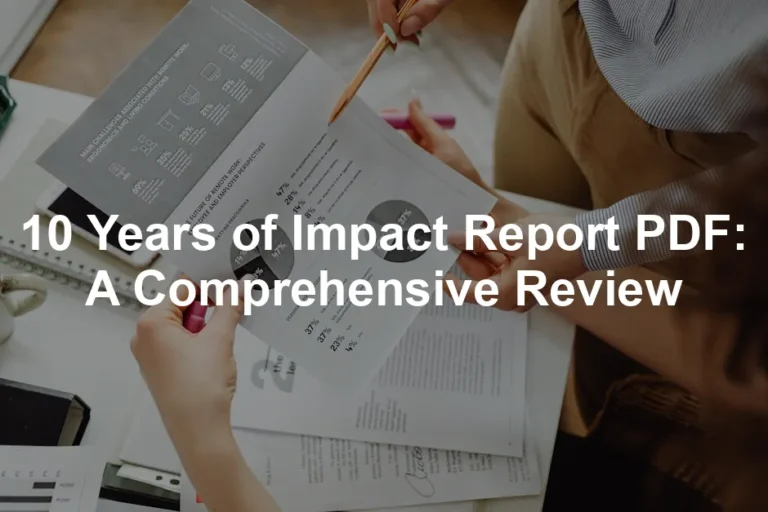Introduction
Instrumental Variables (IV) are a cornerstone of econometrics. They play a crucial role in addressing endogeneity issues that can plague statistical analyses. Endogeneity occurs when an explanatory variable is correlated with the error term, leading to biased estimates. IVs help researchers tackle this problem by providing a valid alternative to traditional estimators. Think of IVs as your trusty sidekick, swooping in to save the day when your variables decide to misbehave.
Now, let’s introduce the star of our show: the Kleibergen-Paap (KP) rk Wald F statistic. This statistic is a powerful tool in the world of IV estimation. Unlike traditional F-statistics that operate under the assumption of independent and identically distributed (i.i.d.) errors, the KP statistic shines in non-i.i.d. settings. This is particularly significant for researchers dealing with complex data structures, where the usual assumptions just don’t hold up.
Understanding the KP statistic is essential for anyone in the field of econometrics. It helps in assessing the strength of your instruments and checking for weak instrument problems. Weak instruments can lead to unreliable estimates, making the KP statistic a vital part of ensuring robust results. For researchers and practitioners, grasping the nuances of the KP statistic can be the difference between drawing valid conclusions and ending up in a quagmire of flawed data interpretations. So, let’s strap in and take a good look at this fascinating statistic and its implications in econometric analysis!
By the end of this section, you’ll have a solid understanding of the KP rk Wald F statistic and its importance in your econometric toolbox. Whether you’re a seasoned researcher or a curious novice, this guide will equip you with valuable insights to enhance your analytical prowess. While you’re at it, consider diving deeper into econometrics with Econometrics by Fumio Hayashi. It’s like a treasure chest of econometric wisdom!

The Kleibergen-Paap rk Wald F Statistic
Definition and Characteristics
What is the KP Statistic?
The Kleibergen-Paap rk Wald F statistic is a robust tool for assessing the strength of instruments in instrumental variable (IV) estimation. Unlike some traditional methods, the KP statistic caters to models where the errors are not necessarily independent and identically distributed (non-i.i.d.).
Mathematically, the KP statistic is derived from the reduced form of the model. It evaluates the first-stage regression, where the instruments predict the endogenous variables. This statistic helps determine how well the instruments explain the endogenous regressors, providing a clearer picture of instrument strength.
The KP statistic is especially useful in situations where weak instruments could lead to biased estimates. By offering a more reliable approach, it enhances the credibility of IV estimates when traditional methods might fail. If you want to deepen your understanding of the mathematical foundations behind this, check out Introduction to Econometrics by Stock and Watson. It’s a great read!

Comparison with Other Statistics
When comparing the KP statistic to the Cragg-Donald statistic, several key differences emerge. The Cragg-Donald statistic is primarily used under the assumption of i.i.d. errors. It provides critical values that researchers often reference when evaluating instrument strength. However, when the i.i.d. assumption doesn’t hold, relying solely on the Cragg-Donald can lead to misleading conclusions.
In contrast, the KP statistic stands out in non-i.i.d. contexts. Its robustness means that it can be applied without the stringent assumptions required by the Cragg-Donald statistic. This advantage allows researchers to maintain analytical integrity even when faced with complex data structures. To further explore statistical learning, don’t miss The Elements of Statistical Learning. It’s a must-read for any aspiring data scientist!
Another notable comparison involves the Anderson-Rubin test, which serves a different purpose. The Anderson-Rubin test checks for weak instruments while simultaneously testing the validity of the excluded instruments. While the KP statistic focuses on instrument strength, the Anderson-Rubin test provides insights into the overall model fit. Thus, understanding the distinctions among these statistics is crucial for effective econometric analysis.
Researchers often find themselves weighing the pros and cons of each method. The KP statistic’s flexibility makes it particularly appealing when dealing with real-world data that frequently violates ideal assumptions.
In summary, the KP statistic is an essential addition to any econometric toolbox. It stands apart from its peers by addressing non-i.i.d. scenarios, thereby enhancing the reliability of IV estimates. By grasping its definition and unique characteristics, researchers can make informed decisions about which statistical methods to employ in their analyses.

When to Use the KP Statistic
– Appropriate Contexts: The Kleibergen-Paap (KP) statistic shines when dealing with non-i.i.d. settings. In these cases, traditional F-statistics, like the Cragg-Donald, can lead to misleading results. When your data doesn’t meet the i.i.d. assumption, the KP statistic provides a more robust solution. This is particularly relevant in real-world datasets where correlation and heteroskedasticity often rear their ugly heads. If you’re facing endogeneity issues or suspect weak instruments, the KP statistic is your go-to tool. Think of it as your trusty umbrella on a rainy day—a must-have when conditions aren’t ideal.
– Understanding Critical Values: Critical values from Stock-Yogo are crucial for interpreting the KP statistic. These values tell you if your instruments are strong enough. For instance, a critical value of 5.53 indicates that anything below this threshold suggests weak instruments. On the other hand, a value above 16.38 signals that your instruments are likely strong. Knowing these critical values can help you avoid the pitfalls of weak instruments, which can lead to biased estimates. So, always check those Stock-Yogo values before you jump to conclusions! And if you’re looking for a practical guide to econometrics, consider A Guide to Econometrics by Peter Kennedy. It’s a classic!

Interpreting the KP Statistic
– Practical Interpretation: When you get your KP statistic, it’s important to interpret the results carefully. A high KP value suggests that your instruments are strong, significantly contributing to the explanatory power of your model. Conversely, a low KP value raises red flags—your instruments may be weak, and you could end up with unreliable estimates. Always compare your KP statistic against the Stock-Yogo critical values to determine the strength of your instruments. It’s like checking the temperature before heading out; you want to be prepared for whatever comes your way!
– Common Misinterpretations: Researchers often fall into the trap of over-relying on the KP statistic without considering the bigger picture. One common pitfall is assuming that a high KP value alone guarantees a valid model. Remember, while the KP statistic assesses instrument strength, it doesn’t check the validity of the instruments. A strong instrument can still be invalid if it doesn’t meet the orthogonality conditions. Always use the KP statistic in conjunction with other tests, such as the Hansen J-test, to ensure your instruments are both strong and valid. Avoiding this misinterpretation can save you from a messy analysis! If you’re looking for a comprehensive overview of statistical methods, consider The Art of Statistics by David Spiegelhalter. It’s a delightful read!

Case Studies and Examples
Real-World Applications: The Kleibergen-Paap (KP) statistic has proven invaluable in various econometric studies. For instance, one recent study focused on the determinants of capital structure in UK public limited companies. Researchers divided their sample based on firm characteristics like size and asset tangibility. They suspected that endogeneity could skew their results. By applying the KP statistic, they could robustly test for weak instruments in their instrumental variable (IV) analysis, significantly enhancing the credibility of their findings. The results indicated that their instruments were not weak, bolstering confidence in their conclusions.
Another notable example comes from research examining the impact of education on earnings. Researchers used lagged independent variables as instruments to address potential endogeneity. By implementing the KP statistic, they could effectively determine instrument strength, leading to more reliable estimates of education’s effect on income. If you want to explore more about programming and statistics, check out The Book of R. It’s an excellent resource for beginners!

Software Implementation
Implementing the Kleibergen-Paap statistic in popular statistical software is straightforward. In R, the fixest package allows users to easily compute the KP statistic through the fitstat() function. To do this, you would run your IV regression and then simply call fitstat(your_model, “ivwald”). This command provides the KP statistic alongside other relevant statistics.
For those using Stata, the process is equally simple. The ivreg2 command can be used to run your IV regression. After running your model, the command automatically reports the KP statistic in the output. This statistic is particularly useful for checking the robustness of your instruments without the i.i.d. assumption, making it an excellent choice for complex datasets. If coding is your jam, don’t forget to check out R for Data Science. It’s a fantastic guide!

Comparative Analysis
KP vs. Other Methods: The KP statistic often shines in scenarios where other methods falter. Take, for example, the Cragg-Donald statistic, which is limited to models assuming i.i.d. errors. In cases of heteroskedasticity or autocorrelation, relying on the Cragg-Donald can lead to misleading conclusions about instrument strength. The KP statistic, on the other hand, provides a more reliable assessment, as it accommodates these complexities. For a deeper dive into econometric theory, consider Econometric Analysis by William H. Greene. It’s a solid reference!
Another point of comparison is the Anderson-Rubin test. While this test checks for weak instruments and the validity of excluded instruments, it can be less robust in certain situations. The KP statistic focuses solely on instrument strength, making it a more straightforward choice when your primary concern is assessing the reliability of your instruments. In summary, the KP statistic stands out as a superior option in non-i.i.d. settings, providing clarity and robustness where alternative methods might struggle.
Each method has its strengths, but understanding when to use the KP statistic can lead to better, more reliable econometric analyses.

Limitations of the KP Statistic
Potential Drawbacks: The Kleibergen-Paap rk Wald F statistic is a fantastic tool, but it’s not without its limitations. One significant drawback is its sensitivity to sample size. Smaller samples can lead to unreliable estimates, making it challenging to draw firm conclusions. If your sample size is too small, the KP statistic can yield inflated values, suggesting strong instruments when they’re not. It’s like thinking you’ve won the lottery with a ticket that’s not even a winner!
Another limitation lies in its robustness to model specifications. The KP statistic assumes a specific model structure, which may not always hold in real-world scenarios. If your model doesn’t fit well, the KP statistic may give misleading results, potentially leading to incorrect interpretations. Researchers should tread carefully here. Always validate your model before relying solely on the KP statistic for conclusions. And if you’re looking for a primer on econometrics, you might find Applied Econometrics with R helpful!

Future Directions
Research Opportunities: The KP statistic is still a relatively new tool in econometrics, leaving plenty of room for future research. One exciting area is the exploration of alternative critical values for different contexts. Current Stock-Yogo values might not cover all scenarios, especially in complex datasets. Researchers could investigate tailored critical values that account for various model specifications and sample sizes.
Another promising direction involves enhancing the statistical methods associated with the KP statistic. Developing more robust alternatives or extensions could improve its applicability in diverse econometric settings. This could lead to refined methodologies that better handle endogeneity and weak instruments, ultimately benefiting empirical research. If you’re interested in statistical models, you might want to look into Statistical Models in S. It’s a great reference!
Lastly, interdisciplinary research could yield valuable insights. By applying the KP statistic in fields outside traditional econometrics, such as finance or social sciences, researchers can expand its utility and establish more comprehensive guidelines for its application. In essence, the KP statistic has much to offer, and the future is bright for those willing to push its boundaries.

Conclusion
Summary of Key Points
The Kleibergen-Paap rk Wald F statistic plays a crucial role in Instrumental Variable (IV) estimation, especially when addressing endogeneity issues. Its robustness in non-i.i.d. settings offers a reliable alternative to traditional F-statistics, like the Cragg-Donald statistic. The KP statistic helps researchers assess the strength of their instruments, ensuring that weak instrument problems do not compromise their analyses. By understanding its unique properties and appropriate applications, researchers can enhance the credibility of their econometric studies.

Final Thoughts
As with any tool, understanding the KP statistic is vital for accurate econometric analysis. Researchers must grasp its appropriate context and limitations to avoid pitfalls. Misinterpretations can lead to flawed conclusions, impacting the overall quality of research. Emphasizing the importance of proper application will empower researchers to utilize the KP statistic effectively, ultimately advancing the field of econometrics. So, next time you find yourself knee-deep in data, remember to wield the KP statistic wisely—it may just be the key to unlocking reliable insights! If you’re also looking for a way to manage your time better while conducting research, consider picking up The 7 Habits of Highly Effective People. It’s a classic for a reason!

FAQs
What is the difference between the KP statistic and the Cragg-Donald statistic?
The KP statistic and the Cragg-Donald statistic serve similar purposes but under different assumptions. The Cragg-Donald is valid only when errors are independent and identically distributed (i.i.d.). In contrast, the KP statistic excels in non-i.i.d. settings, providing robustness when traditional assumptions fail. This makes the KP statistic particularly useful in real-world data analysis.
When should I use the KP statistic over other tests?
Use the KP statistic when dealing with non-i.i.d. data or when you suspect weak instruments. It’s particularly relevant in scenarios where traditional F-statistics, like the Cragg-Donald, may lead to unreliable results. If your model exhibits heteroskedasticity or autocorrelation, the KP statistic is your best bet for assessing instrument strength.
How can I interpret a low KP statistic in my regression results?
A low KP statistic indicates potential issues with instrument strength. It suggests that your instruments may not adequately explain the endogenous variables, raising concerns about endogeneity. If your KP statistic falls below the critical values from Stock-Yogo, you might be facing a weak instrument problem, which can lead to biased estimates.
Are there alternative methods to test for weak instruments?
Yes, several alternative methods exist. The Anderson-Rubin test is one, focusing on joint hypotheses of weak instruments and orthogonality. Robust methods, like the Moreira test, offer further options for assessing instrument strength. Each method has its nuances, so understanding their applications can be beneficial in diverse econometric contexts.
Please let us know what you think about our content by leaving a comment down below!
Thank you for reading till here 🙂
For a deeper understanding of the differences in data interpretation between methods, check out inferential statistics vs descriptive statistics in data interpretation.
For those preparing for exams, the AP statistics formula sheet can be a valuable resource.
All images from Pexels




